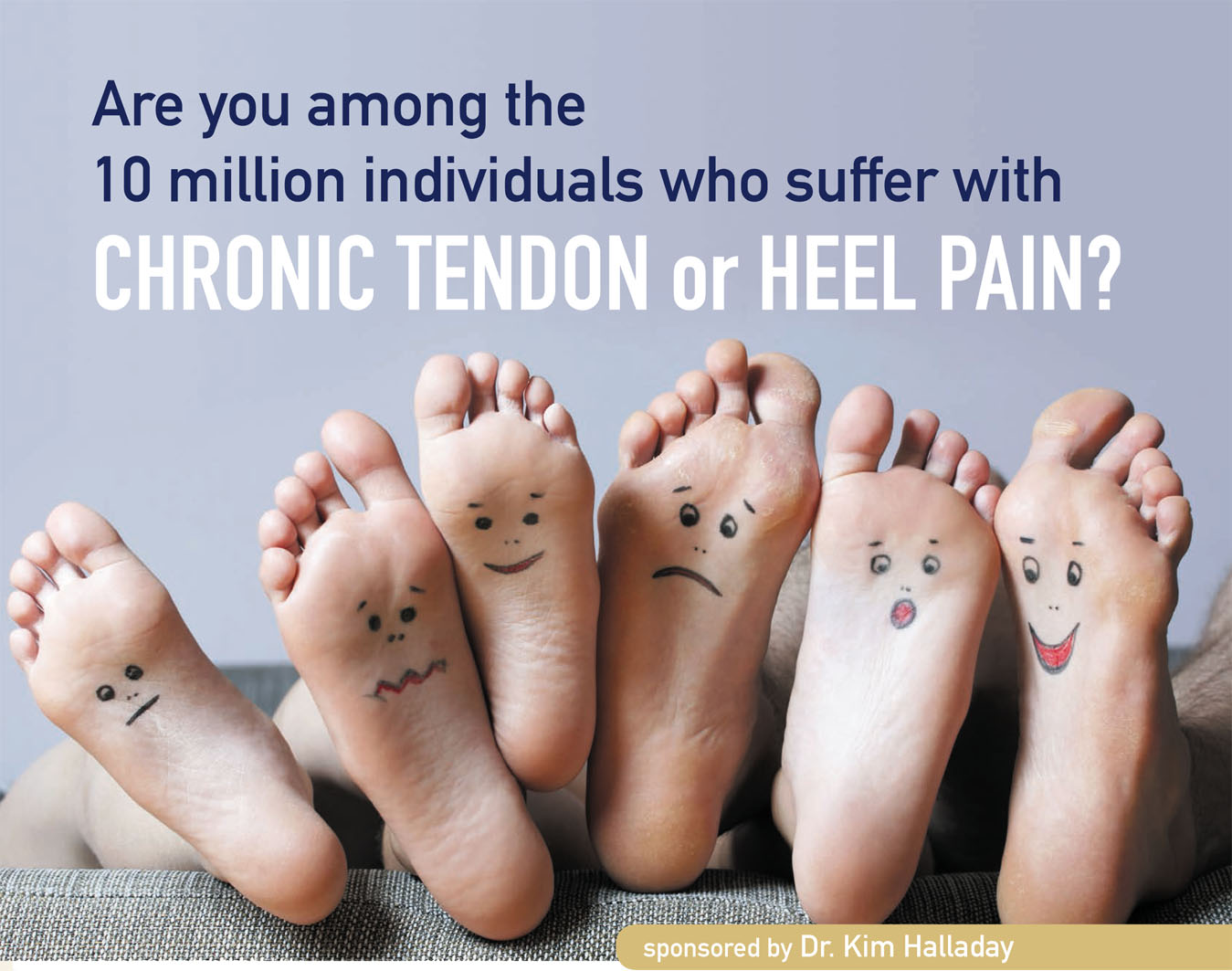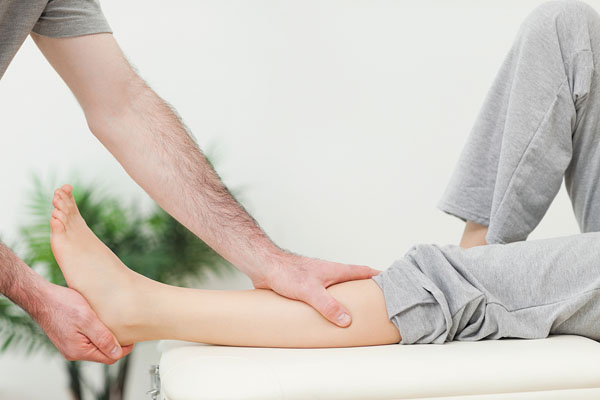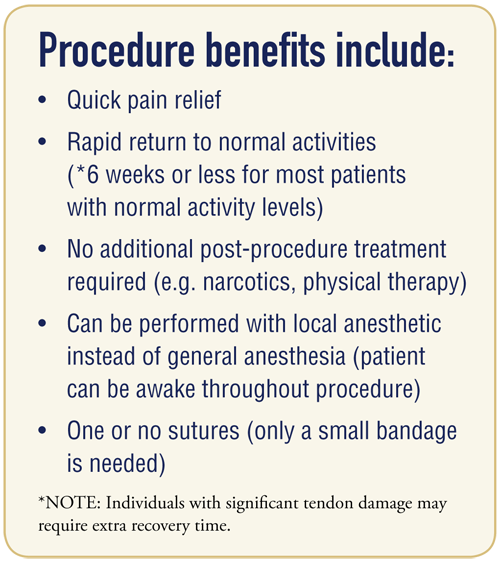
ver 10 million people in this country suffer from chronic tendon or heel pain of the foot! If you have a job that requires you to be on your feet frequently and you are repeating the same motions day in and day out, overtime this may create stress on the tendons of the foot and create discomfort or pain. If you have suffered an injury in the past, even years later, the injury may result in pain and limit your ability to live an active lifestyle. Tendon pain is caused by damage to the tendon when you experience trauma, either from a twist, direct impact or pull on the joint— or by repetitive motion and overuse of the same muscles/tendons in work, exercise, or activity. In these situations, the tendon tissue breaks down. There are new minimally invasive techniques that can be administered to alleviate chronic tendon pain along with other options. The following article will provide valuable information regarding the causes of tendon pain, proper evaluation, and techniques that will help you.
Plantar fasciitis is the most common of these two problems. The average podiatrist will see one or two people in his office each day for this problem. Conservative treatment will help in nine out of ten patients.

Common treatment options include rest, ice, com- pression, elevation (RICE), and stretching as a first treatment. Next, pain medication addresses the pain but not the source of the pain. Physical therapy is often ordered to help improve range of motion and strength. Steroid injections or orthoses may also be tried.
For the one out of ten who do not respond to conservative treatment, surgery is the last alternative. In the past, an open surgical procedure was used to remove the dam- aged tissue. This carries the risk of an open procedure, may cause damage to the surrounding healthy tissue, and results in a lengthy recovery time and restricted activity.

An exciting, minimally invasive technique has been developed to remedy this malady. The Tenex Health TX™ System, developed in collaboration with the Mayo Clinic, combines ultrasound imaging with an innovative, micro-tip in- strument (handpiece) not much larger than a ball- point pen. This handpiece uses optimized ultrasonic energy to precisely break up and remove pain-emitting, damaged, soft tendon tis- sue without disturbing surrounding healthy tissue or other major structures. The immediate removal of dam- aged tissue promotes a secondary healing response.
technique has been developed to remedy this malady. The Tenex Health TX™ System, developed in collaboration with the Mayo Clinic, combines ultrasound imaging with an innovative, micro-tip in- strument (handpiece) not much larger than a ball- point pen. This handpiece uses optimized ultrasonic energy to precisely break up and remove pain-emitting, damaged, soft tendon tis- sue without disturbing surrounding healthy tissue or other major structures. The immediate removal of dam- aged tissue promotes a secondary healing response.
The Tenex Health TX™ System is a minimally invasive technique, so patients enjoy less discomfort and faster recovery times versus a traditional open surgical procedure.
You no longer need to continue suffering with chronic tendon pain or plantar fasciitis in your ankle or foot. This is an exciting alternative to traditional open surgery to alleviate substantial pain these conditions cause patients. For more information, visit the Tenex Health TX™ website at www.tenexhealthpatient.com.


